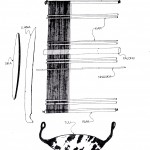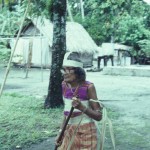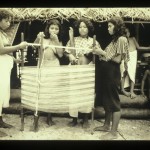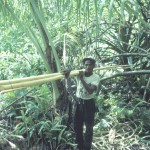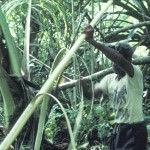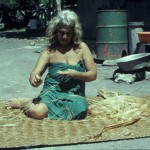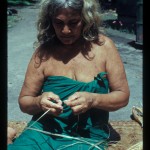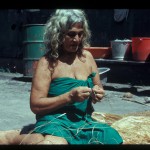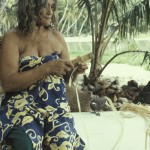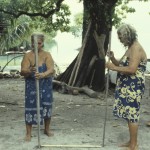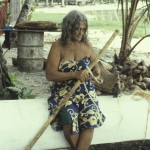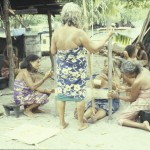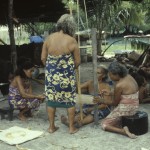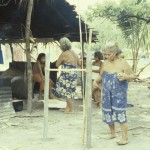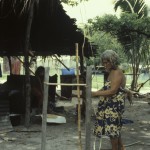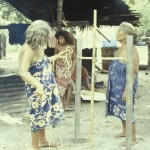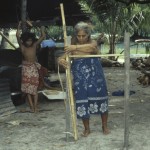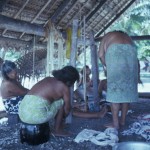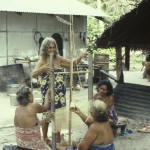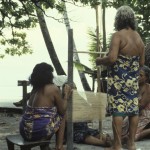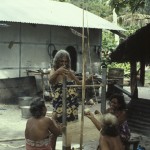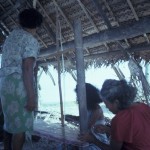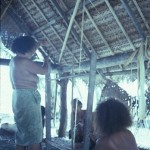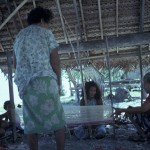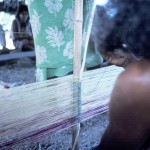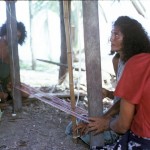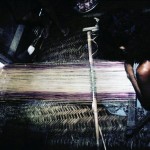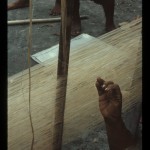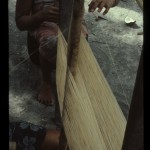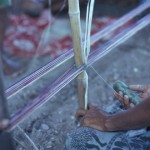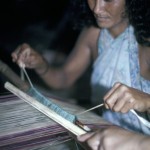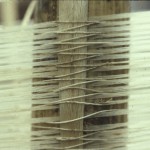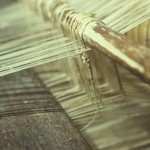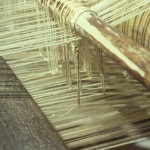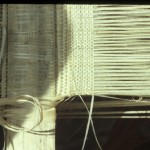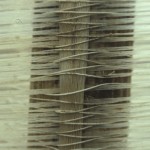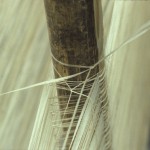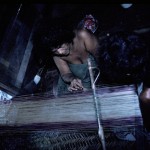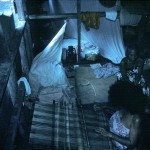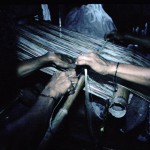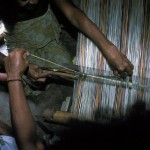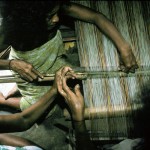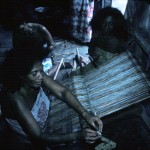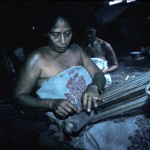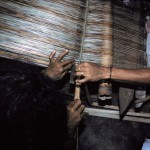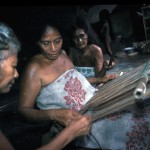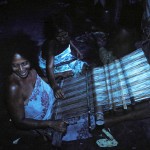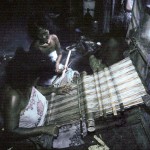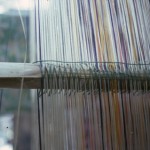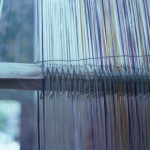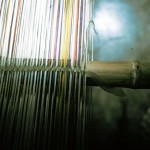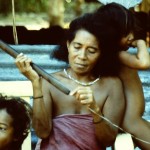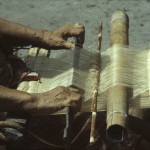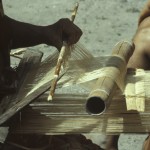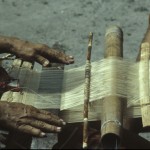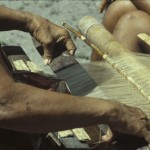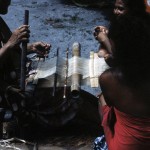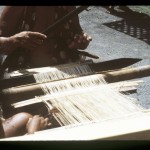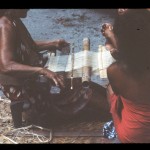The following slides show the Sikaiana loom. The loom technique is unusual in Polynesia and most likely was imported from Santa Cruz or Micronesia. No loom was used as part of daily life during my stays in 1980-1987. But several were set up: once on my request and another time as part of a grant from the National Museum. Before trade associated with European expansion, all clothing was made with the loom and some people remember mosquito nets being made from the loom. Loom made belts (taakai) still worn in 1980-87 occasionally before and after pregnancy for cosmetic reasons– to make the belly firm. The material for the loom is collected from the inner bark of kie (pandanus?) which is left in the ocean for several days. The material is then separated into long strains which are tied together by hand. The loom is then set up.
During my stays in the 1980s, I thought the loom would discontinued. But as of 2020, I learned that the loom has been revived and has been used to make belts. Much of this seems to be part of the cultural displays that have been performed as part of a cultural village at Tenaru.
David Akin sent me a description of the Sikaiana loom that he found in the archives of the British Protectorate. The description appears to be written by a patrol officer, J.L.O. Tedder. I thank David for forwarding this information. The report can be found here Loom Report
You can find a video I took in 1981 about loom making here:
https://research.library.kutztown.edu/sikaiana_films/1/
The first slide is a diagram of the parts of the loom. The second slide shows Fane Telena dressed as the Sapai Ulu in a re-enactment of a traditional ritual performed in 1982 during a visit of the Prime Minister of the Solomon Islands. Enlarge the picture to see her entire dress which was made on a loom. Next are two pictures from the Templeton-Crocker Expedition that were taken in 1933. Note the woman who is wearing the loom-made cloth.
The next pictures generally show the process of gathering material, preparing the fabric, setting up the loom, and then using it. The last picture shows Hanamea working on the loom.
- This is a diagram of the loom parts. Diagram was made by Henry Teloto, 1983.
- Fane dressed as Sapai Ulu, note she is wearing a dress made on the loom
- This is a pciture of a woman wearing a belt (taakai) from 1933, Templeton-Crocker
- Women setting up the loom. 1933, Templeton-Crocker.

